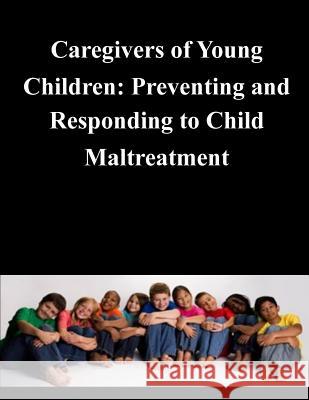Caregivers of Young Children: Preventing and Responding to Child Maltreatment » książka
Caregivers of Young Children: Preventing and Responding to Child Maltreatment
ISBN-13: 9781503300293 / Angielski / Miękka / 2014 / 90 str.
Caregivers of Young Children: Preventing and Responding to Child Maltreatment
ISBN-13: 9781503300293 / Angielski / Miękka / 2014 / 90 str.
(netto: 49,36 VAT: 5%)
Najniższa cena z 30 dni: 51,54
ok. 16-18 dni roboczych.
Darmowa dostawa!
Whether caregivers work with children from low-, middle-, or upper-income homes, at some time they are likely to encounter child maltreatment. Relatives (parents, grandparents, etc.) and nonrelatives (child care providers, teachers, etc.) who abuse and neglect children live in cities, suburbs, and rural areas; come from all ethnic backgrounds; can be male or female; and may be any age. Child abuse and neglect may be a single incident, such as a child care provider shaking an infant to make him/her stop crying; it may be a pattern of behavior, such as incest between parent and child that takes place over several months or years; or it may be parental failure to provide adequate supervision of a toddler on an ongoing basis. Child maltreatment is often difficult to recognize, particularly in young children who are not seen regularly by anyone other than their parents and child care providers. The caregivers' frequent contacts with children put them in an excellent position to recognize and report suspected child maltreatment. In addition, by providing support to children, families, and colleagues under stress and building on family strengths, caregivers may help them learn ways to cope with their problems, thus preventing maltreatment from occurring. When maltreated children are enrolled in a high-quality child care program, the caregivers' sensitivity to their feelings and needs will contribute to their recovery from abuse or neglect.
Zawartość książki może nie spełniać oczekiwań – reklamacje nie obejmują treści, która mogła nie być redakcyjnie ani merytorycznie opracowana.











